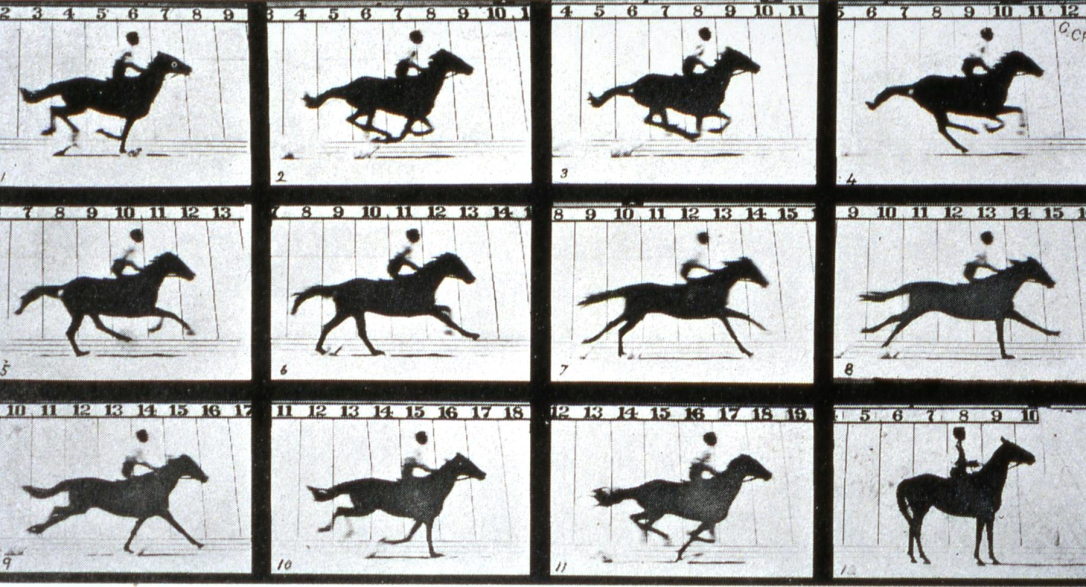
Eadweard Muybridge, original name Edward James Muggeridge.
He was born on April 9, 1830, Kingston upon Thames and died May 8, 1904. He was an English photographer important for his pioneering work in photographic studies of motion and in motion-picture projection.
In 1860, while travelling to the East Coast en route to England, Muybridge was involved in a stagecoach accident. Muybridge received serious head injuries and received serious head injuries. As a result, he suffered from double vision and confusion, and friends noticed a difference in his behaviour.
The process of his discovery
Eadweard began his experiments in photographing motion in 1872 when Leland Stanford hired him to prove that during a particular moment in a trotting horse’s gait, all four legs are off the ground at the same time. His first attempts were unsuccessful because his camera didn’t have a fast shutter. The project was then interrupted while Muybridge was being tried for the murder of his wife’s lover. He found it convenient to travel for a number of years in Mexico and Central America, making public photographs for the Union Pacific Railroad, a company owned by Stanford.
In 1877 he returned to California and resumed his experiments in motion photography, using a battery of from 12 to 24 cameras and a special shutter he created that captures images at a really fast pace, specifically, an exposure of 2/1000 of a second. This arrangement proved Stanford’s contention.
In 1883, Muybridge was invited to continue his research at the University of Pennsylvania and for the next few years made thousands of photographs of humans and animals in motion. Near the end of his life, he published several books featuring his motion photographs and toured Europe and North America, presenting his photographic methods using a projection device he’d developed called the Zoopraxiscope.
The zoopraxiscope is an early device for displaying motion pictures. Created by Eadweard Muybridge in 1879, it is considered to be the first movie projector.
The horse in motion

